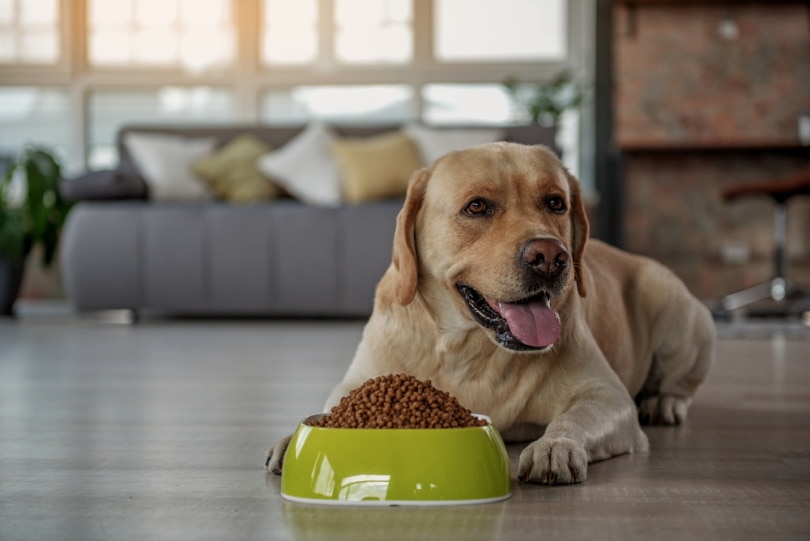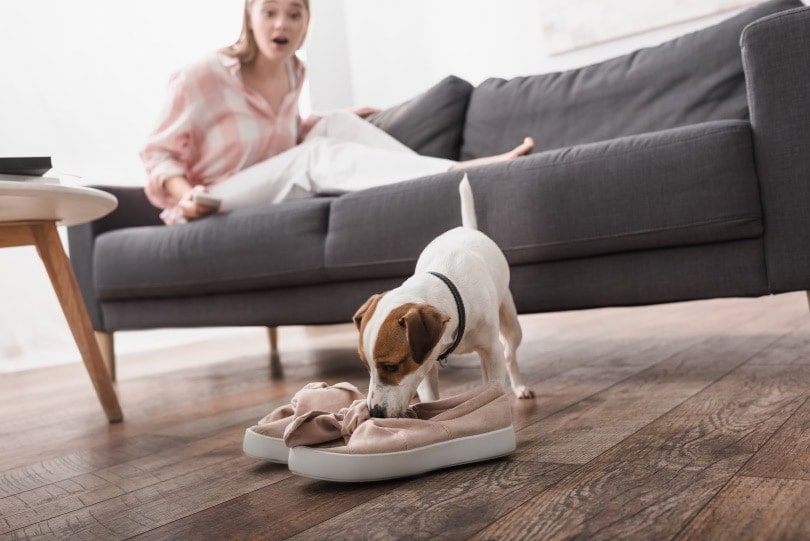Great Pyrenees vs Great Dane: The Differences (With Pictures)
By Jordyn Alger
Updated on
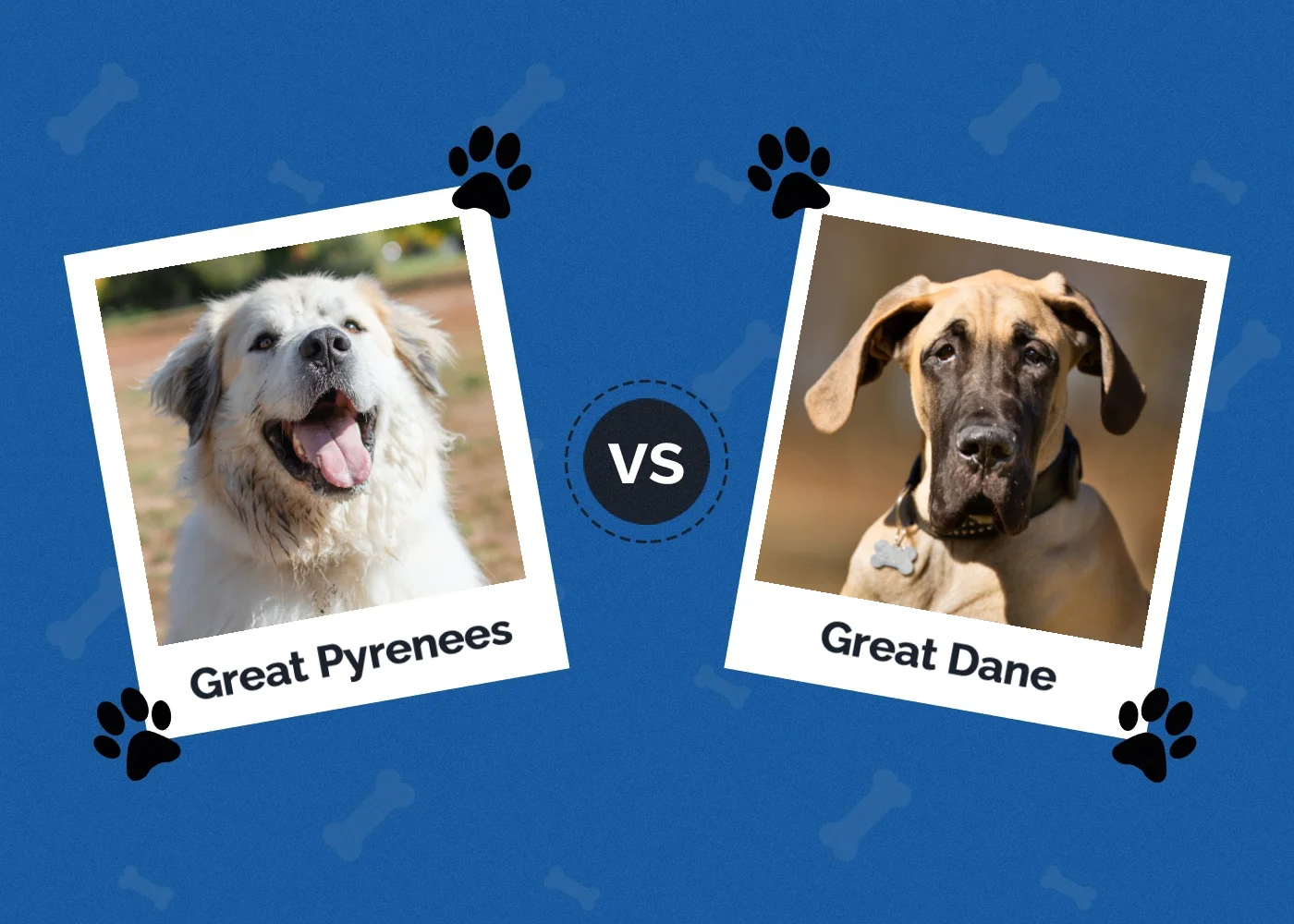
Click to Skip Ahead
There are several magnificent large-breed dogs in the world. Two of them are so magnificent that they have the word great right in their name: the Great Pyrenees and the Great Dane. The Great Pyrenees is an intelligent, patient breed with a calm demeanor. They are recognized by their thick, light-colored coats and friendly expressions.
The Great Pyrenees was bred to herd livestock and deter predators, including fearsome wolves and bears, so their size and might are nothing to scoff at. Similarly, the Great Dane towers over most other canines and has earned the nickname of “Apollo of Dogs.”
The Great Dane is larger and heavier than the Great Pyrenees. Their incredible size made them capable of fulfilling their original purpose: hunting wild boar. Today, both breeds are excellent family dogs that keep a vigilant watch over their loved ones. If you are trying to decide which dog is right for you, keep reading below to learn more about their differences.
Visual Differences
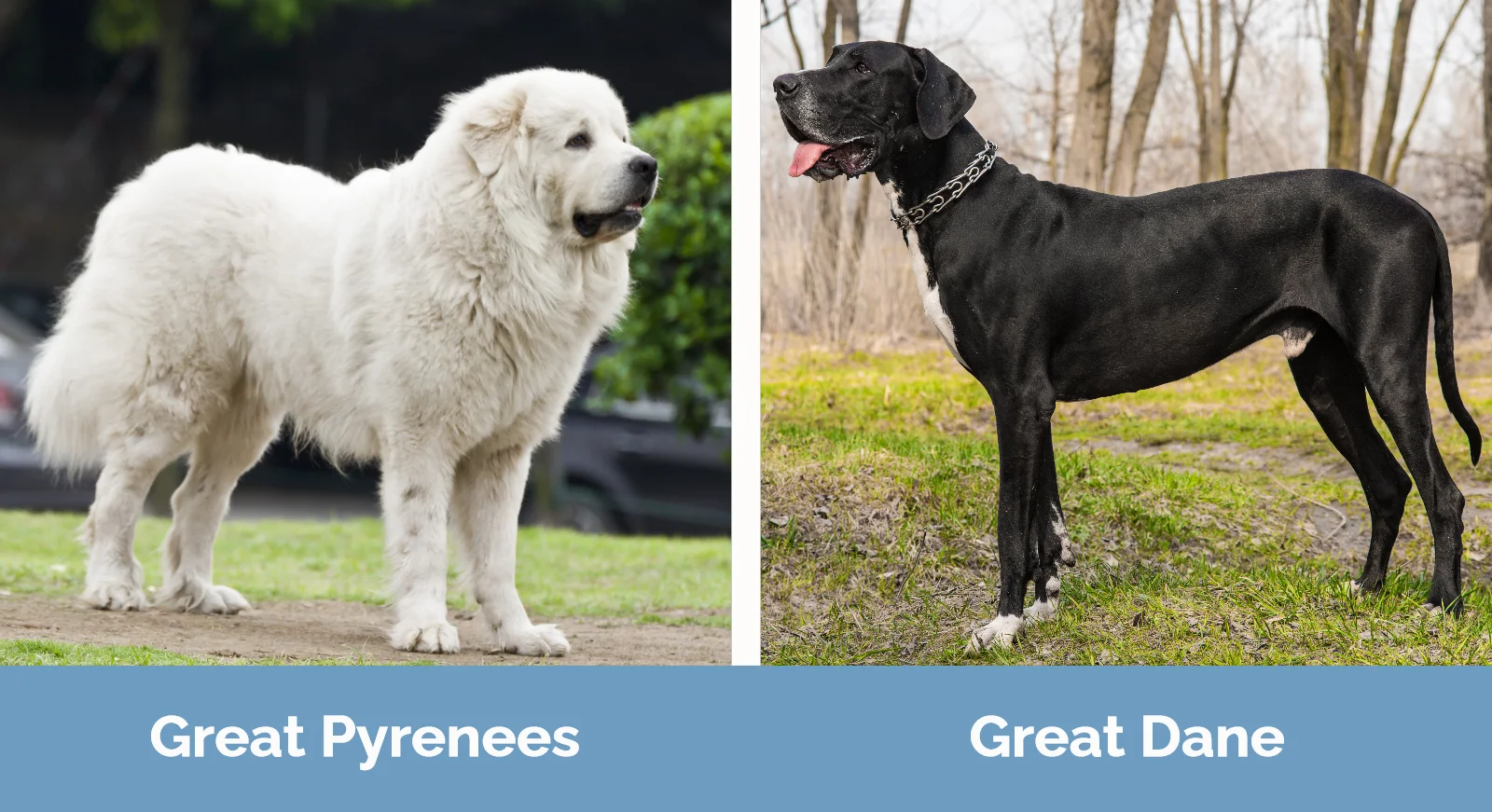
At a Glance
- Average height (adult): 25–32 inches
- Average weight (adult): 85–100+ pounds
- Lifespan: 10–12 years
- Exercise: 30 minutes per day
- Grooming needs: Moderate
- Family-friendly: Yes
- Other pet-friendly: Often
- Trainability: Intelligent yet independent
- Average height (adult): 28–32 inches
- Average weight (adult): 110–175 pounds
- Lifespan: 7–10 years
- Exercise: 1 hour per day
- Grooming needs: Minimal to moderate
- Family-friendly: Yes
- Other pet-friendly: Often
- Trainability: Eager to please yet occasionally stubborn
Great Pyrenees Overview
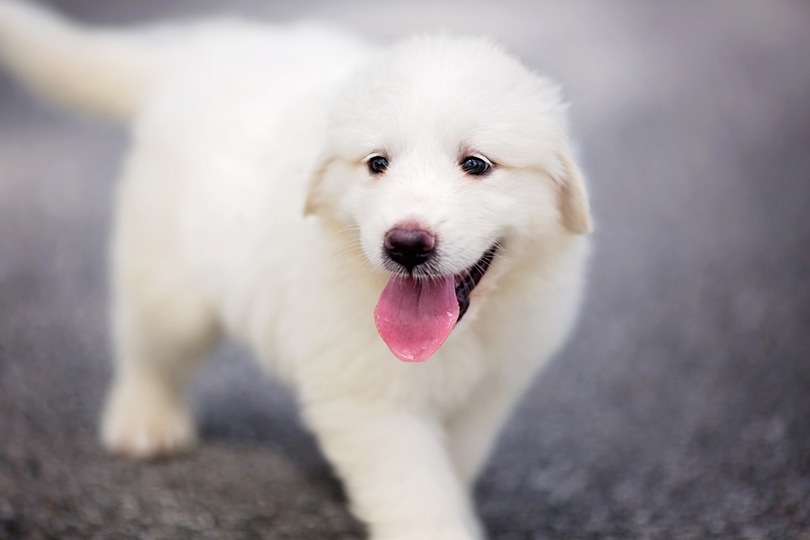
Personality / Character
You may think that a dog bred to herd and defend livestock would be bursting with energy, but that’s not the case for the Great Pyrenees. While the Great Pyrenees is no couch potato, they aren’t known to bounce off the walls, either. They’re fairly docile and even-tempered, preferring to stay close to their loved ones. Although they have the patience to tolerate a more exuberant canine friend, they may need time to retreat and relax.
As a vigilant breed, the Great Pyrenees is known to bark fairly often. They aren’t the chattiest breed in the world, but if they perceive a threat, they’ll definitely let you know about it. Their calm demeanor makes them excellent companions for children, but their size can present a challenge for smaller children if they accidentally bump into each other. A collision could seriously hurt a young child since the Great Pyrenees can weigh over 100 pounds.
Exercise
As mentioned before, the Great Pyrenees is not especially energetic. Moderate activity will be sufficient to keep your dog in good condition. Two Brisk walks and a few play sessions every day will be enough to satisfy their energy requirements. Although they don’t need as much exercise as other energetic dogs, they prefer engaging in activities with their owners rather than playing alone.

Training
The Great Pyrenees is intelligent, which can make training easier. However, they were also bred to work independently, so they sometimes follow their own path. Obedience training is essential, but the Great Pyrenees rarely take an interest in it. Your Great Pyrenees may perform commands reluctantly just to show you how displeased they are with being told what to do! Still, training the Great Pyrenees is essential, as a large dog with no training is a disaster waiting to happen.
Although training a self-willed dog may be frustrating at times, patience is critical. Consistency and positive reinforcements are the best way to overcome your Great Pyrenees’s stubborn attitude.
Health & Care
Despite all of the fur that the Great Pyrenees has, they don’t require excessive grooming. They shed moderately and only need to be brushed once weekly since their coat is tangle-resistant. The Great Pyrenees has a double coat, so you’ll need to brush their coat more often during shedding season.
In terms of healthcare, growth disorders such as elbow dysplasia and hip dysplasia are more common. It is a good idea to make regular appointments with your vet to ensure that your Great Pyrenees is not suffering from any of these issues.
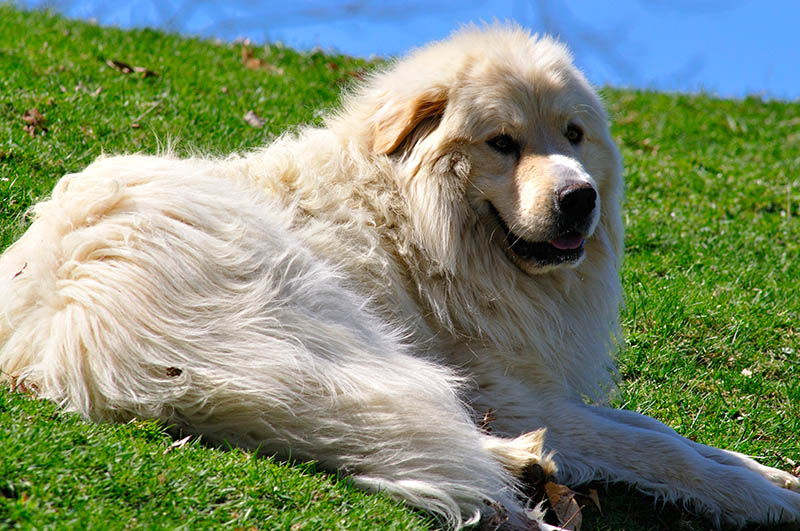
Suitable For:
The Great Pyrenees can be a great companion for families with children, but households with small children are not recommended due to the significant difference in size. The Great Pyrenees is tolerant of other dogs, but both dogs must be properly socialized and trained to ensure there is no conflict.
Households in rural and urban areas alike can house the Great Pyrenees due to their calm demeanor; however, particularly cramped apartments are not ideal due to their large size. Moderately active families are a good fit for the Great Pyrenees, who enjoy relaxing but still require regular activity.
Great Dane Overview
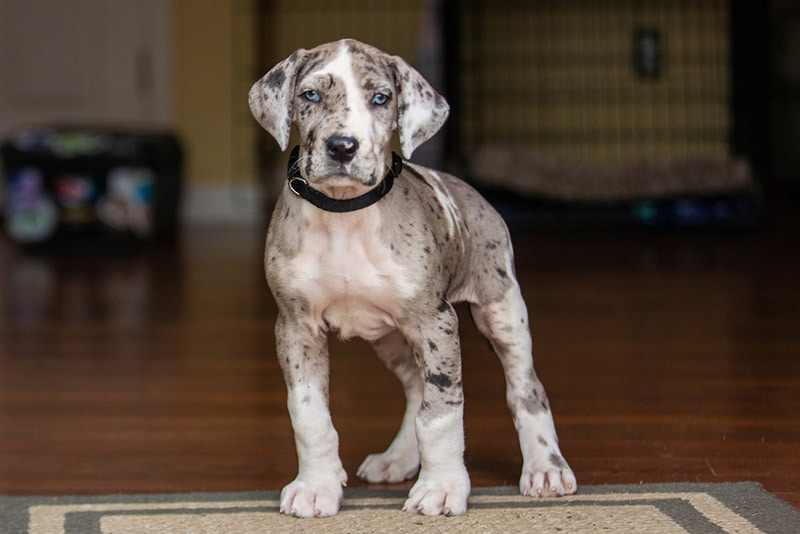
Personality / Character
The Great Dane, much like the Great Pyrenees, is a gentle giant. They are playful dogs with friendly, patient temperaments, but they can be somewhat reserved when around strangers. If the Great Dane perceives a threat, they are likely to bark. Since they are so protective, proper socialization and training are essential to prevent the Great Dane from becoming overly defensive.
The Great Dane is highly affectionate with family and good with children. However, their interactions with small children should be carefully supervised, like most large dogs. One wrong move and the Great Dane could accidentally knock over an infant.
Exercise
While the Great Dane can be calm at times, they are more energetic than the Great Pyrenees. Therefore, they will require 1 to 2 hours of exercise daily. While they can be excellent running companions, it is important to wait until they are at least 2 years old to avoid unnecessary strain on growing joints. Like the Great Pyrenees, the Great Dane enjoys playing games with their owners and being around their family as much as possible.
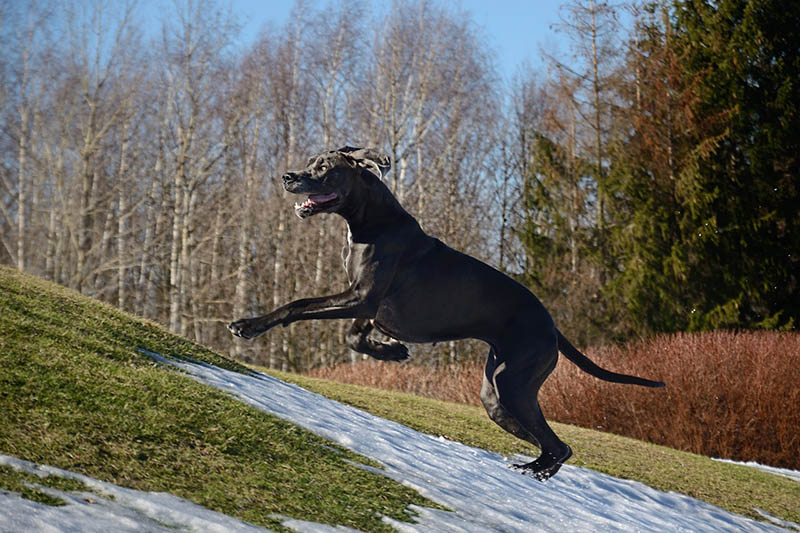
Training
Training is essential for the Great Dane. Obedience training must be done while your Great Dane is a puppy so that they learn early on to listen to you. This will help them to grow into a well-behaved canine companion.
Similarly, socialization will prevent your Great Dane from becoming a frightful, timid creature. Exposing the Great Dane to new experiences in puppyhood is vital to preventing them from developing into an anxious adult.
Health & Care
Great Danes shed moderately and only require weekly brushing. They have single coats with short hair, so brushing them is easy. The Great Dane should also be bathed every 6–8 weeks. The Great Dane may be prone to ear infections with their long, floppy ears, so checking and cleaning their ears regularly is essential.
When owning a Great Dane, one of the most severe medical conditions you should be aware of is bloat. Bloat is when gas expands in the stomach, cutting off blood flow to other body parts. This is a painful and potentially life-threatening condition for dogs, so avoid engaging in strenuous activity with your dog directly after mealtime.
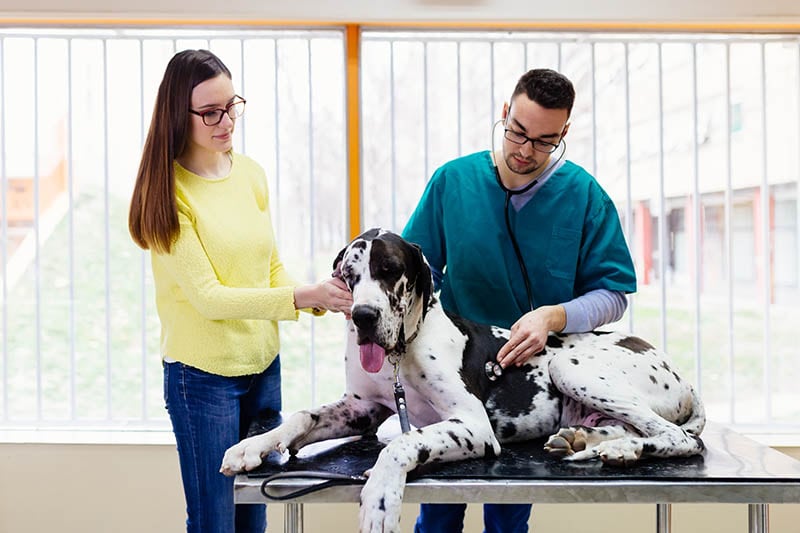
Suitable For:
Great Danes are excellent family dogs; they have lots of affection for their loved ones and tolerate other dogs. They are also excellent guard dogs due to their vigilance and imposing appearance. However, their large size may not make them ideal for households with small children or animals, as they may accidentally knock them over.
Experienced dog owners are best for the Great Dane. Although they are not known for having a challenging temperament, their size can make them difficult to handle for first-time owners. Therefore, proper obedience training is necessary to make sure no accidents occur.
Which Breed Is Right for You?
Deciding which breed is right for you can be a challenge. The Great Pyrenees and the Great Dane are excellent companions with loving, patient personalities. They are easy to groom and only shed moderately. These traits make them great family pets, as they are tolerant of children and easy to clean up after. Likewise, they are highly vigilant. Those looking for a family-friendly guard dog will be pleased with either breed.
The main difference between the dogs comes down to activity levels. While both breeds are calm, Great Pyrenees dogs tend to be more subdued than the Great Dane. Moderately active families can enjoy both breeds, but highly active families may prefer the Great Dane. Furthermore, families in smaller homes can house the Great Pyrenees well enough but not the Great Dane.
Ultimately, the breed that is right for you is the breed you can best care for. We hope this article has shed some light on the differences between the Great Pyrenees and the Great Dane.
Featured Image Credit: Left – Ryan Leeper, Pexels | Right – BIGANDT.COM, Shutterstock



